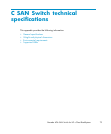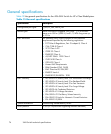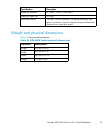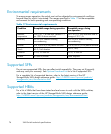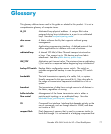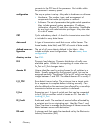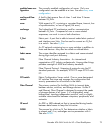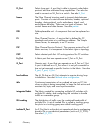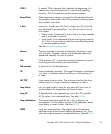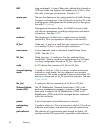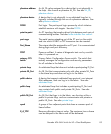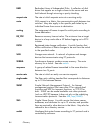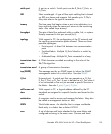FL_Port Fabric loop port. A port that is able to transmit under fabric
protocol and has arbitrated loop capabilities. Can also be
used to connect an NL_Port to a switch. See also U_Port.
frame The Fibre Channel structure used to transmit data between
ports. Consists of a start-of-frame delimiter, header, o ptional
headers, data payload, cyclic redundancy check, a
nd
end-of-frame delimiter. There are two types of frames: link
control frames and data frames. See also packet.
FRU Field-replaceable unit. A component that can be replaced on
site.
FS Fibre Channel Ser vice. A service that i s defined by FC
standards and exists at a well-known address. The Simple
Name Server, for example, is an FC service.
FSP Fibre Channel Service Protocol. The common protocol for all
fabric services; it is transparent to the fabric type or topology.
FSPF Fabric shortest path first. HP routing protocol for FC switches.
Fx_Port AfabricportthatcanoperateasanF_PortorFL_Port.
G_Port Generic port. A port that can operate as an E_Port or F_Port.
Aportisdefined as a G_Port when it is not yet connected or
hasnotyetassumedaspecificfunctioninthefabric.See also
E_port, F_port, U_Port.
hard address The AL_PA that an NL_Port attempts to acquire during loop
initialization. See also defined zone configuration.
idle Continuous transmission of an ordered set over an FC link
when no data is being tra nsm it ted, to keep the link active and
maintain bit, byte, and word synchronization.
integrated fabric The fabric created by connecting multiple HP switches with
multiple ISL cables, and c on figuring the switches to handle
traffic as a seamless group.
ISL trunking The distribution of traffic over the combined bandwidth of
multiple ISLs. A set of trunked ISLs is called a trunking group;
the ports in a trunking group are called trunking ports.
isolated E_Port An E_Port that is online but not operational due to overlapping
domain IDs or nonidentical parameters (such as E_D_TOVs).
See also E_D_TOV.
80
Glossary




